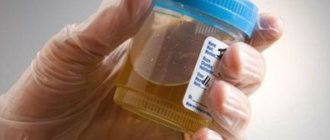Make an appointment by phone +7,,
Make an appointment online
A smear from the mucous membrane of the pharynx is a laboratory research method designed to determine the composition of the microflora from the specified organ. The analysis is taken for further study under a microscope of the material or for inoculating it on a nutrient medium. The procedure itself is painless, but at the same time it allows you to accurately determine the possible causes of otolaryngological diseases.
Main stages of bacteriological analysis
Bacteriological culture is considered a standard procedure in identifying infections. It consists of the following steps:
- Biological material is taken from the nose and sown in a nutrient medium (agar-agar solution, sugar broth).
- Test tubes with the material are placed in an environment beneficial for bacteria, where all conditions are created for their reproduction.
- Bacteria are being studied.
- Obtaining an antibiogram.
- Assignment of therapy.
- long-term research;
- high requirements for the qualifications of laboratory workers;
- strict criteria for the removal of biological raw materials;
- rules for preparing for bacteriological culture from the nasal cavity.
General rules before taking the test:
- Within one to three days, it is necessary to remove alcoholic beverages and foods that accelerate fermentation processes in the intestines (brown bread, cabbage, cucumbers, radishes) from the diet.
- Do not rinse your nose for one day.
- Do not use antibacterial medications for 3-4 days.
- For one day, you should refrain from using drops and ointments in the nasal cavity.
Culture can be done with material taken from the nose, blood, urine, etc. Before taking it, you should definitely take a break after using antibiotics.
Preparation for collection of prostate secretions
To obtain prostate secretions, massage it with a finger through the anus, as during a rectal examination of the gland. In order for the specialist to be guaranteed to receive the material, the man needs to abstain from sexual contact for 3-5 days before the study. Also needed:
- do not drink alcohol or smoke for 2-3 days before the test;
- 8 hours before the test, stop eating;
- do not visit the bathhouse or sauna, do not take hot baths a couple of days before the test;
- in the morning before the procedure, do a cleansing enema;
- Empty your bladder before the test.
Scope of application of bacteriological culture
Bacteriological culture is used to make an accurate diagnosis in the following areas:
- ENT diseases;
- dermatology;
- urology;
- venereology;
- gynecology and other areas of medicine.
Bacteriological culture is equally effective against both non-acute and indolent, latent infections. Bacteriological culture is very often used to detect infections in the nasal cavity to diagnose rhinitis and sinusitis. It is also widely used for gynecological purposes.
However, many of these medical fields needlessly abuse this procedure. Often, the use of bacterial analysis depends on material interests and the reluctance or ignorance of doctors regarding methods for diagnosing syndromes.
Basically, this analysis is indicated for use in the presence of female pelvic inflammatory disease and recurrent vulvovaginitis, male prostatitis and chronic torpid urethritis, but it is also widely used for diseases of the nose and throat. Doctors insist on confirming the presence of various nasal infections in the following categories of citizens: girls, elderly women, conscripts and pregnant women.
In what cases is it recommended to take a flora smear?
A microflora smear is performed for the purpose of diagnosing and preventing inflammatory diseases of the female genital area (usually, if nothing bothers the woman, once every 6 months), and for diagnostic purposes in the presence of the following symptoms:
- Pain or discomfort in the lower abdomen.
- The presence of pathological discharge from the genital organs.
- Itching in the genital area.
- Pain during sexual intercourse.
A smear for flora is recommended for all women planning pregnancy, as well as after long-term treatment with antibiotics or drugs that reduce immunity (corticosteroids, antitumor drugs, etc.).
A smear on the flora allows you to identify sexually transmitted diseases: gonorrhea, trichomoniasis, as well as bacterial vaginosis (violation of the ratio of beneficial and pathogenic bacteria in the vagina).
Fence technique
Swabs from the throat and nose are taken according to a certain algorithm. It is the same for detecting any infections. The differences lie in the method of storing and transporting the material for different infections.
The technique for taking a swab from the throat is as follows.
- Why do they take a nasal swab: indications for the study, what can be detected, explanation
- The patient is seated on a chair, facing the doctor, and a light source is placed in front of him.
- The doctor asks the person to tilt his head back and open his mouth as wide as possible.
- Using a spatula, lower the tongue down and press it.
- Use a cotton swab to collect mucus from all the walls of the throat.
- Place the swab into a sterile tube and close it tightly.
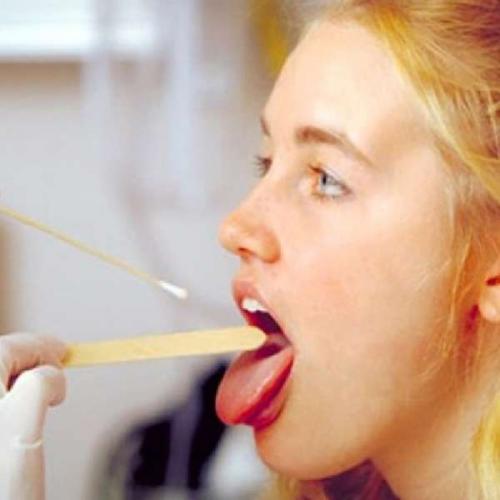
Taking a throat swab
Then the test tube with the resulting material is delivered to the laboratory for inoculation on nutrient media. The procedure is painless, but does cause discomfort. In a person with a strong gag reflex, touching the root of the tongue with a cotton swab can provoke vomiting.
Algorithm for collecting a nasal swab:
- The patient is seated in front of the doctor and a light source.
- The doctor asks the person to tilt their head back a little.
- A sterile cotton swab is inserted into both nasal passages alternately and mucus is collected from their walls.
- Place the swab in a sterile tube and transport it to the laboratory.
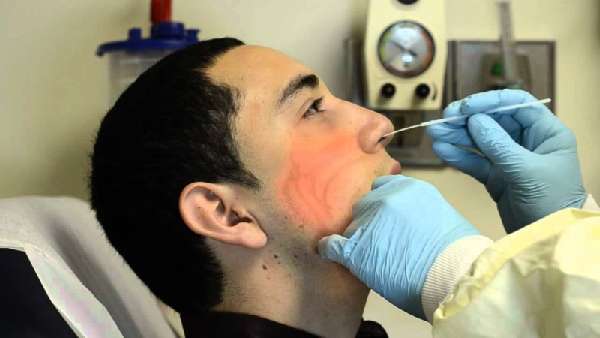
Taking a nasal swab
The procedure also does not cause pain, but for some patients it is uncomfortable.
The obtained material is examined in several ways:
- rapid test - allows you to identify antigens to the pathogen, used to diagnose influenza during an epidemic;
- bacteriological examination - culture of nasopharyngeal mucus is done on nutrient media, the analysis is ready in 5-7 days;
- PCR diagnostics is the name of the most accurate method that allows you to identify the genetic material of the pathogen.
The choice of study is determined by the attending physician depending on the disease.
- Swab from the throat and nose: concept, when and how to do it, explanation
Flora smear during pregnancy.
During pregnancy, due to changes in the body's hormonal levels, the risk of various inflammatory diseases of the vagina is especially high. The presence of an inflammatory process in the genital tract can have serious complications such as miscarriage, premature birth, infection of the child during childbirth in the presence of specific pathogens. In this regard, a pregnant woman is recommended to undergo a smear test for flora at least 3 times during pregnancy: when first visiting a doctor, at 30 weeks of pregnancy and at 36-37 weeks. An additional smear test for flora may be prescribed if there are complaints of itching, burning in the genital area and a change in the nature of the discharge (unpleasant odor, change in the color of the discharge, or its quantity). Interpretation (decoding) of a smear for flora during pregnancy is carried out according to the same parameters as in non-pregnant women. During pregnancy, a slight excess in the content of leukocytes in the smear is acceptable (up to 15-20). Collecting material for a smear during pregnancy is completely safe for the fetus.
2. Smear for cytology.
A cytology smear (for atypical cells) is a laboratory microscopic examination that is carried out for the purpose of early diagnosis of cervical cancer. Pap smear tests evaluate the size, number, shape, and arrangement of cervical cells to help identify precancerous lesions and cervical cancer.
Indications
The doctor prescribes culture of mucus from the throat and nose for microflora and sensitivity to antibiotics to confirm the diagnosis of various infectious diseases in children and adults. A smear is taken:
- with sore throat;
- if you suspect whooping cough;
- to exclude diphtheria of the pharynx;
- for fungal diseases.
A swab is also taken for healthy people during medical examinations. The following categories of people should take a smear:
- pregnant women;
- persons who have been in contact with a patient with diphtheria or tonsillitis;
- persons entering work in the food industry, educational and preschool institutions, and medical institutions.
Each person has normal and conditionally pathogenic microflora in the nasal cavity and pharynx, its quantity does not exceed a certain indicator. Under normal conditions, flora does not cause any diseases in humans.
1. Smear on the flora.
A flora smear (general smear, bacterioscopy) is a laboratory microscopic examination that allows you to determine the nature of the microflora of the vagina, cervical canal or urethra (urethra). Microflora is the entire spectrum of “beneficial” and pathogenic microbes of any organ. The microflora of the female genital organs is represented mainly by lactobacilli, which maintain an acidic environment in the vagina, which prevents the proliferation of pathogenic microbes. Violation of the vaginal microflora is characteristic of diseases such as bacterial vaginosis, candidiasis (thrush), and vaginitis.
Preparing for a PSA test
PSA is a prostate-specific antigen, which is a tumor marker. A PSA test is performed to diagnose and evaluate the effectiveness of treatment for adenoma and prostate cancer. The material for the study is blood from a vein.
How to prepare for a PSA test for a man:
- 10 days before the analysis, exclude any mechanical impact on the prostate: rectal examination, massage, transrectal ultrasound.
- For 3 days, eliminate fatty, fried, spicy and pickled foods. Eat more easily digestible foods, give up alcoholic beverages.
- Avoid sexual intercourse for 2 days, since ejaculation causes a temporary increase in PSA.
- For several days before the test, do not exercise and limit heavy physical activity.
- Do not eat for 8 hours before the test. You are only allowed to drink a little still water.
PCR in women
Preparing for a woman to take a PCR test involves:
Preparing for a PCR test for a woman is as follows:
- To take a smear, it is advisable to choose day 5-6 of the cycle, that is, immediately after your period.
- It is not recommended to douche the vagina during the day before taking a smear.
- If you intend to examine material from the oral mucosa, it is advisable not to eat or drink for several hours before the examination.
- Ideally, PCR tests are performed in the morning on an empty stomach or in the first half of the day.
- It is not advisable to urinate within 2 hours before taking a smear when taking a urethral smear.
- It is not recommended to urinate for two hours before collecting material for PCR from the vagina.
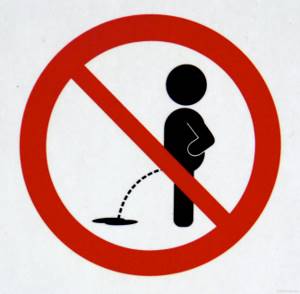
- You should not take antibacterial medications at least a week before the test.
- It is recommended to abstain from sexual intercourse two days before the examination.
- Hygiene procedures must be carried out in the evening.
The PCR method allows you to detect the following diseases:
- trichomoniasis (caused by Trichomonas vaginalis)
- chlamydia (caused by Chlamydia trachomatis)
- ureaplasmosis (pathogen - Ureaplasma parvum, Ureaplasma urealyticum)
- mycoplasmosis (pathogen - Mycoplasma hominis, Mycoplasma genitalium)
- gardnerellosis (pathogen: Gardnerella vaginalis)
- candidiasis (pathogen: Candida albicans)
- HPV (human papillomavirus) types of varying degrees of oncogenicity
- herpes virus infection (HSV types 1 and 2)
But this is not a complete list of infections.
A venereologist prescribes a PCR blood test for a woman who suspects the presence of diseases such as:
- AIDS virus
- Viral hepatitis B, C, D, G
- Cytomegalovirus infection
- Enterovirus infection
- Toxoplasmosis
- Infectious mononucleosis
- Listeriosis
When do women undergo smear and blood tests for PCR after infection?
If you need control after antibiotics, conventional PCR in women will not show accurate results.
A control test after treatment is prescribed in the form of a bacteriological test; PCR in women is not very informative.
This is due to the fact that PCR in women is false positive.
Small particles of the killed infectious agent give such a positive reaction.
Quantitative PCR result in women: what is it
When is it necessary to perform quantitative PCR testing?
It is for monitoring after a course of antibiotic therapy that the quantitative PCR technique can be used.
Unlike conventional PCR, this method will give an idea of the amount of pathogen.

The examination results are usually ready in 1-2 days.
The time it takes to prepare results depends on the clinic, the distance of the laboratory and other factors.
Mouth swab: for which STDs is PCR performed in women?
Some sexually transmitted infections can be transmitted during oral sex.
In addition, there are a number of other diseases that may require a PCR swab from the throat.
Infections such as:
- chlamydia
- treponema pallidum
- mycoplasma
- diplococci, namely gonococcus
- ureaplasma
- genital herpes
- human papilloma virus
- Fungi of the genus Candida
Anal smear: for which infections is PCR performed in women?
Some sexually transmitted infections can develop in the microflora of the rectum after anal sex.
In this case, a woman experiences inflammation of the rectum - proctitis.
Activation of nonspecific microflora of the rectum is also not uncommon.
Candidiasis may develop.
If the human papillomavirus gets in, papillomas or warts may appear on the walls of the rectum.
The most common infections that are detected when collecting material from the rectum are:
- Chlamydia
- Gonorrhea
- Syphilis
Where can I get PCR tests for women?
A woman can take a PCR test at a private or public dermatovenerology clinic.
In a private test center, you can get tested anonymously and much faster than in a public one.
How long does it take for smears and blood to be tested for PCR in women?
After submitting the material, you will receive a transcript of the PCR test in 1-2 days, but in some situations, it is possible to receive results on the first day.
False-negative and false-positive PCR in women
There is a small chance that the PCR test result will be false.
The result can also be influenced by external factors related to the technical equipment of the laboratory.
Therefore, our clinic is equipped with the most modern equipment.
This minimizes the occurrence of false positive or false negative results.
PCR in women: price
Depending on the clinic you choose, the price may vary.
The price also depends on the selected infection being diagnosed.
In our clinic, the price of a PCR test for STIs is 300 rubles.
Which doctor prescribes a PCR test for women?
A doctor in what specialty can prescribe a PCR test for women?
Most often, tests for infections are prescribed by a gynecologist or urologist.
A blood test for HIV using the PCR method for women is prescribed by an infectious disease specialist or venereologist.
The polymerase chain reaction method is different
The polymerase chain reaction method is highly sensitive and specific.
A very small amount of test material and, accordingly, DNA or RNA of bacteria and viruses is enough to reveal the presence or absence of certain pathogens.
Moreover, using the PCR method, you can determine the type of specific pathogen.
How to prepare for a PCR smear in women
Let's look at how to prepare for a PCR smear in women.
There is a list of rules that should be followed before PCR analysis.
Interpretation of PCR results in women
Interpretation of PCR results in women is carried out by a specialist doctor.
The result could be:
- positive (certain pathogens have been identified)
- negative (pathogens were not identified in the studied material)
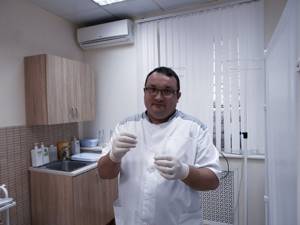
The test results must be assessed by the observing physician and, if necessary, treatment prescribed.
If you need to take PCR tests, please contact the author of this article - a venereologist, urologist in Moscow with 15 years of experience.
